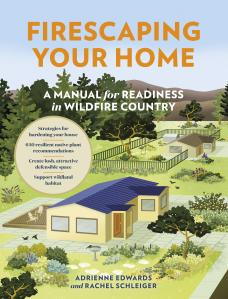Q&A with the Authors of Firescaping Your Home: A Manual for Readiness in Wildfire Country
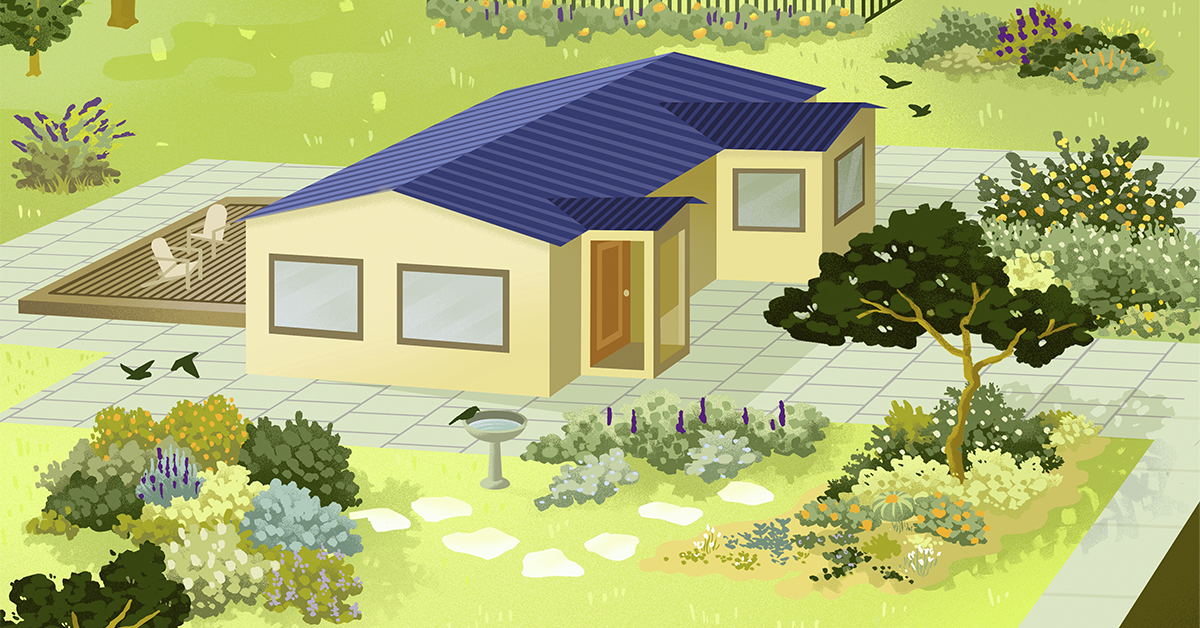
Wildfires have become increasingly devastating in recent years, especially in wildfire-prone areas of California, Oregon, and Washington. Firescaping offers a practical solution to protecting property against wildfire danger. Adrienne Edwards, PhD, and Rachel Schleiger, MS, provide expert guidance and specific recommendations on hardening your home against fire and creating a defensible, lush, attractive space in their new book Firescaping Your Home: A Manual for Readiness in Wildfire Country.
What is firescaping?
Firescaping is the practice of creating fire-resilient landscapes by reducing fire hazards and supporting wild ecosystems
The online Collins Dictionary defined firescaping, “to arrange the features of (a garden or other area of land) in a way that inhibits the spread of fire, for example by increasing the amount of open space and cultivating fire-resistant plants”.
More precisely, firescaping should be associated with managing the distribution of fuels and vegetation health to reduce fire hazards while supporting wildlife habitats—so that we can live more harmoniously with fire and wildlands.
This hardworking, actionable guide is a must-have for homeowners looking to fight the risks of wildfire spreading to their homes and property.
Wildfires are burning over longer seasons and more intensely than ever before, and everyone living in a wildland-urban interface or wildland-adjacent area should take precautionary steps to mitigate the risk of property damage. In Firescaping Your Home, Adrienne Edwards and Rachel Schleiger provide expert guidance and specific recommendations on how to harden your home against fire and create defensible space that is lush and attractive. They also provide in-depth native plant lists of hundreds of species that have evolved to coexist with fire in the West, and show how and why including these on your property sustains wildlife and can actually be your most powerful defense.Why is firescaping so important?
Greater than one-third of all residents in the West live in the wildland-urban interface (WUI), where communities are built adjacent to or intermixed with wilder areas. The WUI is the fastest-growing area of residential housing in the continental US, and by far the most likely to burn. Some completely urban areas are within ember-shower distance of wildfires as well.
In the future, the climate in the western US is going to be even more fire-prone. It is essential for us to be informed and have resources to draw from to feel confident in our fire readiness preparations. We can learn to live with and manage fire.
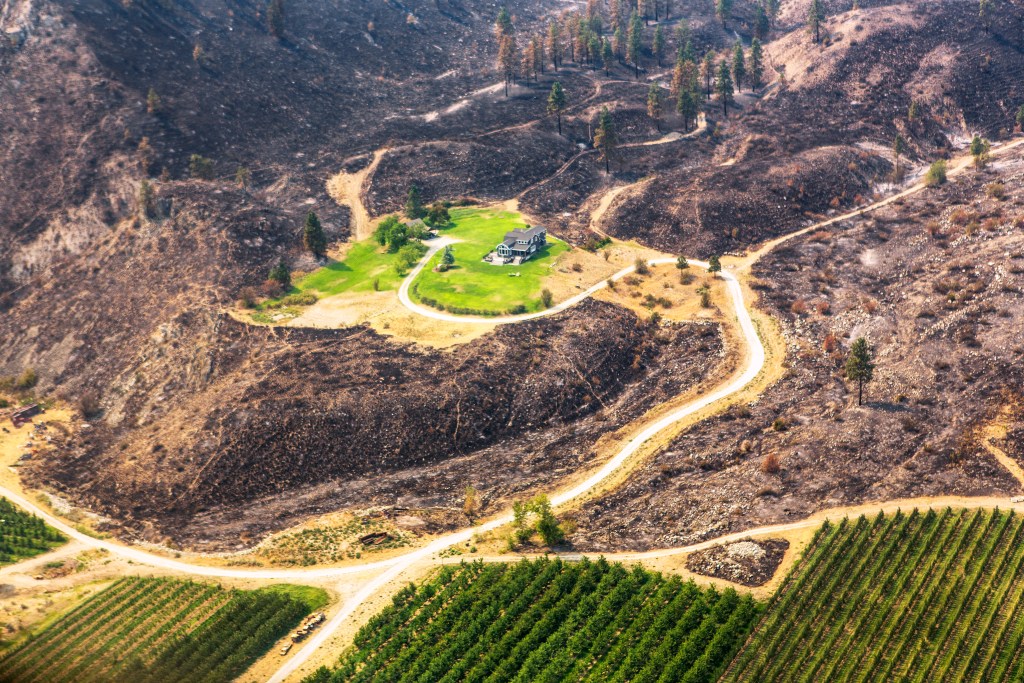
How does Firescaping Your Home help homeowners in wildfire country?
Our book will help readers support living landscapes that are fire resilient, describing how to:
- Assess the variables of your landscape, community, and climate that influence fire susceptibility.
- Evaluate structure risks and priorities for rehabilitation to improve fire resiliency.
- Manage fuel densities based on habitat zones, weather, vegetation type, and topography.
- Reduce the flammability of landscaping with timely plant management.
- Pick appropriate plants for both your ecoregion, and fire resistance/resilience.
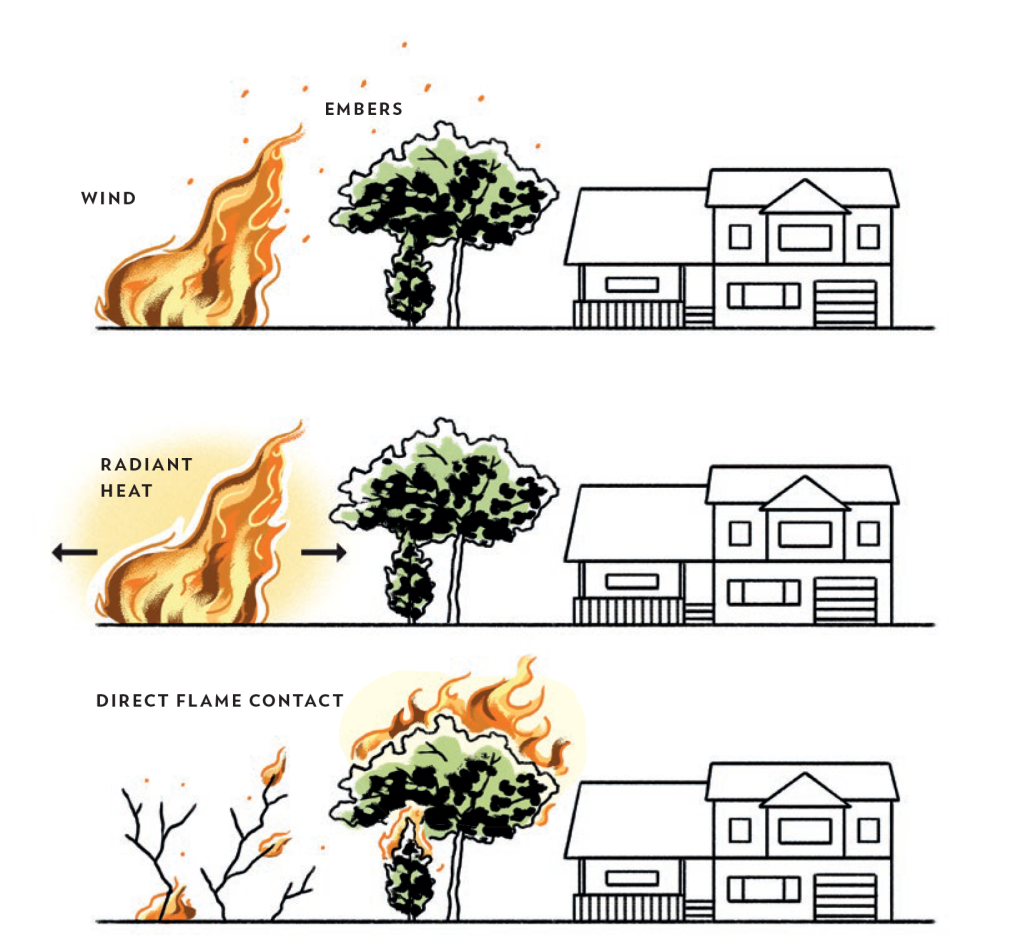
Is it possible to strike a balance between firescaping and coexisting with nature?
Absolutely, that is why we wrote this book!
Our book can help readers take small steps season-by-season and year-by-year to become more prepared for a fire emergency and build stronger connections to nature with their landscape.
Where should homeowners interested in firescaping start?
Step one: Family first.
Beyond our book topics, know that being prepared to evacuate saves your family and that is more important than your home and landscape.
Have a “Go Bag” that includes your wildland fire action plan (house preparation, packing lists, evacuation plans, and contact numbers) so when an emergency arises, you and your family are ready to go.
Step two: Structures second.
Assess your house and any other structures where you live for fire vulnerability. Then prioritize fireproofing on those structures with respect to degree of hazard, and costs for upgrades.
We provide lots of tips in our book on how to harden your home with firescaping, but you can also consult with a fire professional or contractor with experience in how to make homes more fire resistant.
Step three: Landscapes third.
Noncombustible Zone (0-5 ft): During fire season (depending on conditions), nothing combustible should be within about 5 feet of any structure. That includes wood fencing. No more “foundation plantings”.
Lean, Clean, & Green Zone (5-30 ft, or more depending on slope): Research indicates that thinning fuels within 30 feet of structures, and maintaining a noncombustible zone next to structures, are far more important than anything you might do beyond the Lean, Clean, & Green zone. Plants should be kept healthy, and clustered plantings can be punctuated by noncombustible areas of rock, bare ground, inorganic mulches, etc.
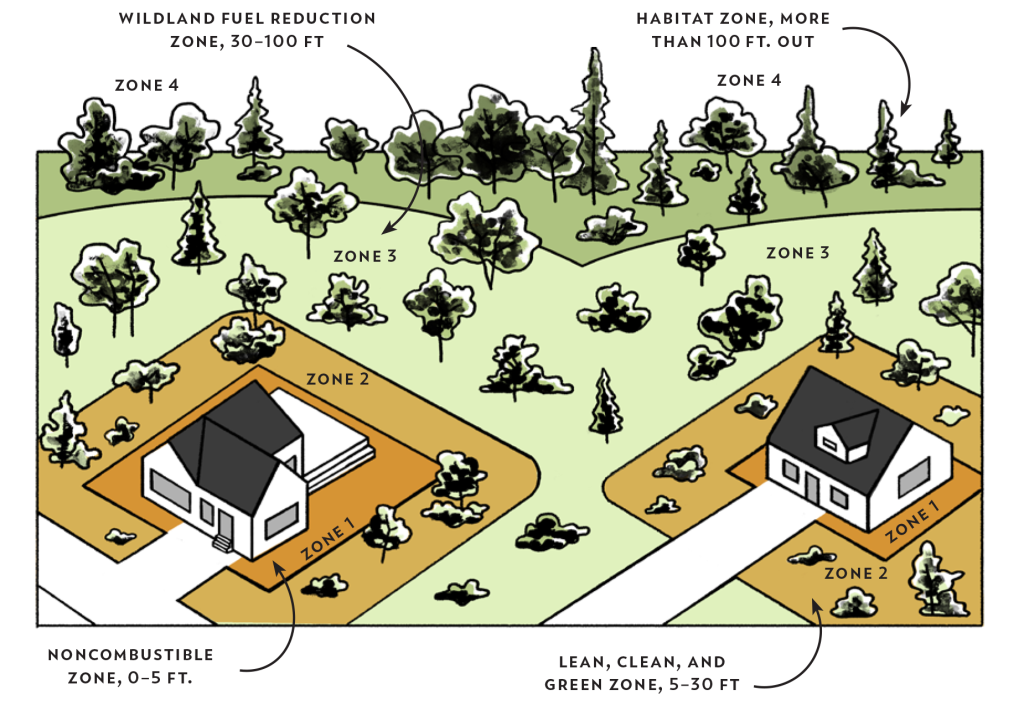
Step four: Habitat support.
Think about your neighbors; that is, your plant neighbors, your wildlife neighbors, and your human neighbors. Fire resilience should be coordinated at the community level. The more land we develop, the more we need to provide oases for native plants. Pollinators and other wildlife need food, water, and shelter.
Learn more about how to provide those resources in your yard, and when. The timing of when you clear vegetation can have huge impacts on pollinators and birds in particular.
In a cooler, wetter year, you should leave flowers, seeds, branches, and other habitats in place longer prior to fire season to allow organisms to reproduce.
In a hotter, drier year you might have to clear vegetation sooner, but many of your wildlife neighbors would clear out sooner as well.
Step five: Enjoy.
Enjoy the natural beauty of your region with the confidence that you have prepared for evacuation if needed and reduced your fire risks while continuing to support the habitat around you.
How do native plants reduce wildfire risk and protect houses?
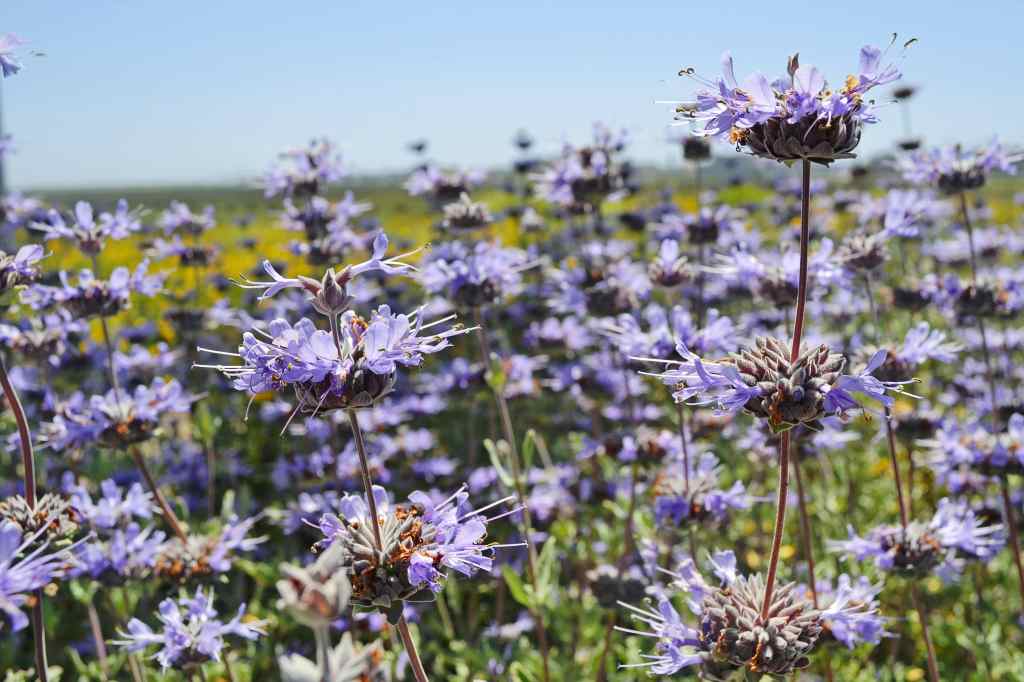
Outside of managing fuel densities, the other main goal of firescaping is to maintain plant health and biodiversity. The healthier the plant, the more resistant/resilient it will be to fire.
Plants that are native to your ecoregion are adapted to that climate, thus, the maintenance required to keep native plants healthy is much lower than most non-native plants. Once you get natives established, it takes very little watering to keep them healthy. Planting natives saves you time, water, and money!
Finally, natives support and promote a diversity of wildlife on your landscape. If you can’t hear or see signs of wildlife in your yard, then you are contributing to the global loss of native biodiversity.
This book contains a list of fire resistant plants native plants for California, Oregon, and Washington to help homeowners make informed decisions about cultivating a fire-resistant landscape.
When is the best time homeowners to start firescaping?
Today! Preparing for fire is an all-year process. Each season of the year you can be doing something in your yard to be ready for fire season. Spreading your efforts across the whole year makes the process much less stressful headed into fire season.
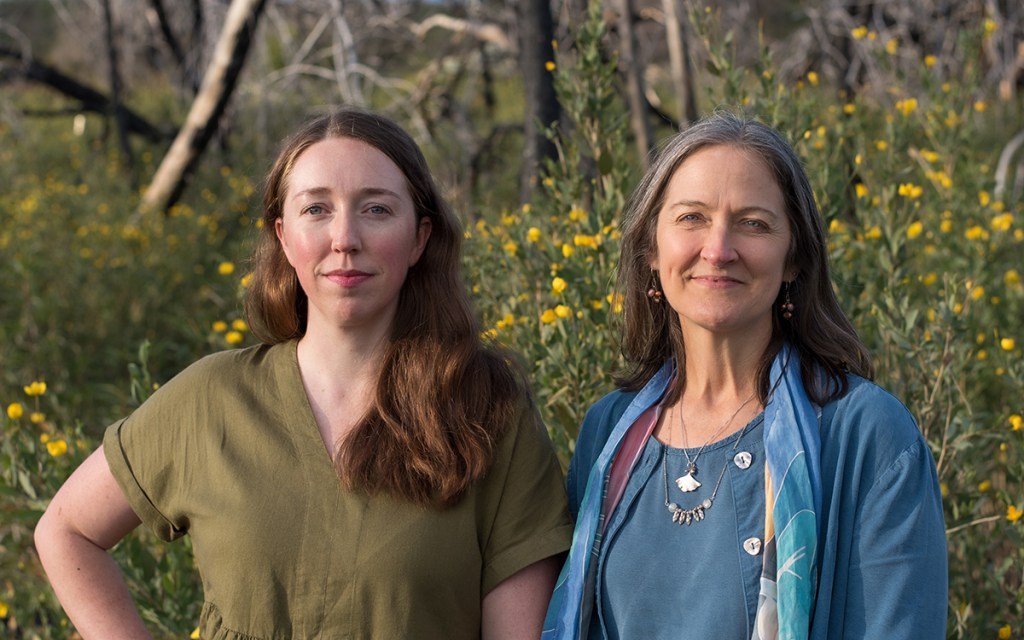
Rachel Schleiger, MS, is a plant ecologist who specializes in restoration ecology. Her family and property survived the most deadly and destructive fire on record, the 2018 Camp Fire. She is currently a faculty lecturer at both Butte College and California State University, Chico.
Adrienne Edwards, PhD, is a botanist, plant ecologist, garden designer, environmental consultant, and teacher with over 30 years of experience. She is currently a faculty lecturer at California State University, Chico.
This hardworking, actionable guide is a must-have for homeowners looking to fight the risks of wildfire spreading to their homes and property.
Wildfires are burning over longer seasons and more intensely than ever before, and everyone living in a wildland-urban interface or wildland-adjacent area should take precautionary steps to mitigate the risk of property damage. In Firescaping Your Home, Adrienne Edwards and Rachel Schleiger provide expert guidance and specific recommendations on how to harden your home against fire and create defensible space that is lush and attractive. They also provide in-depth native plant lists of hundreds of species that have evolved to coexist with fire in the West, and show how and why including these on your property sustains wildlife and can actually be your most powerful defense.